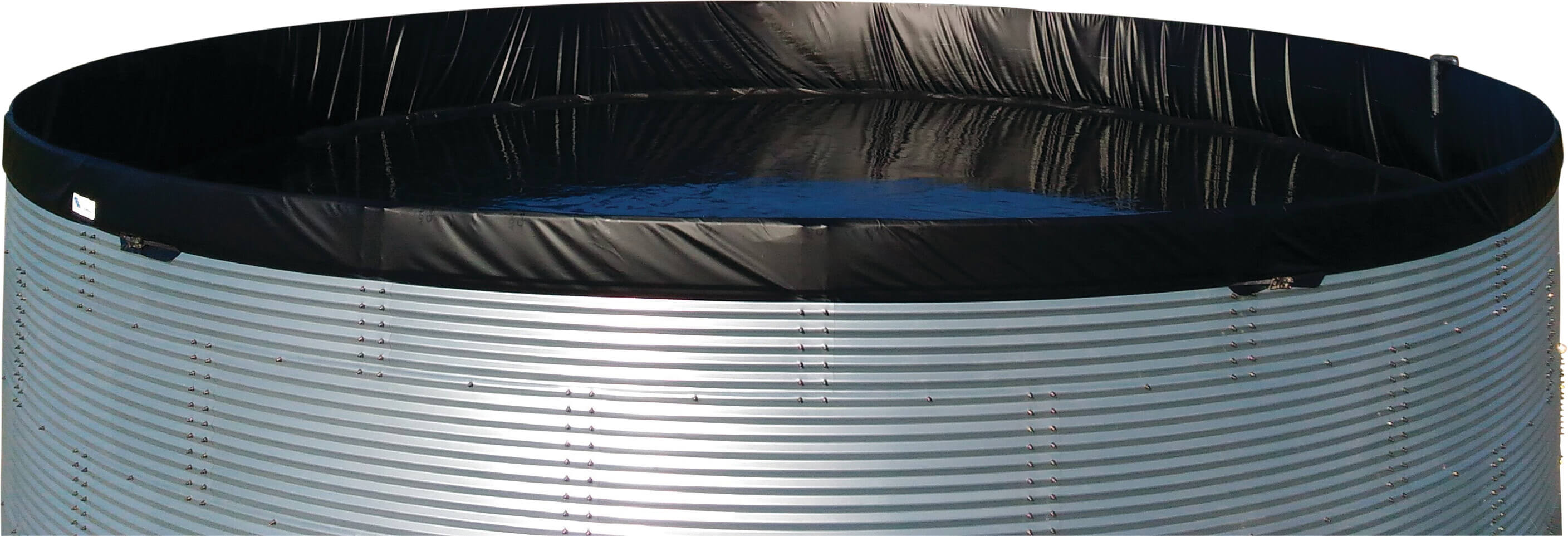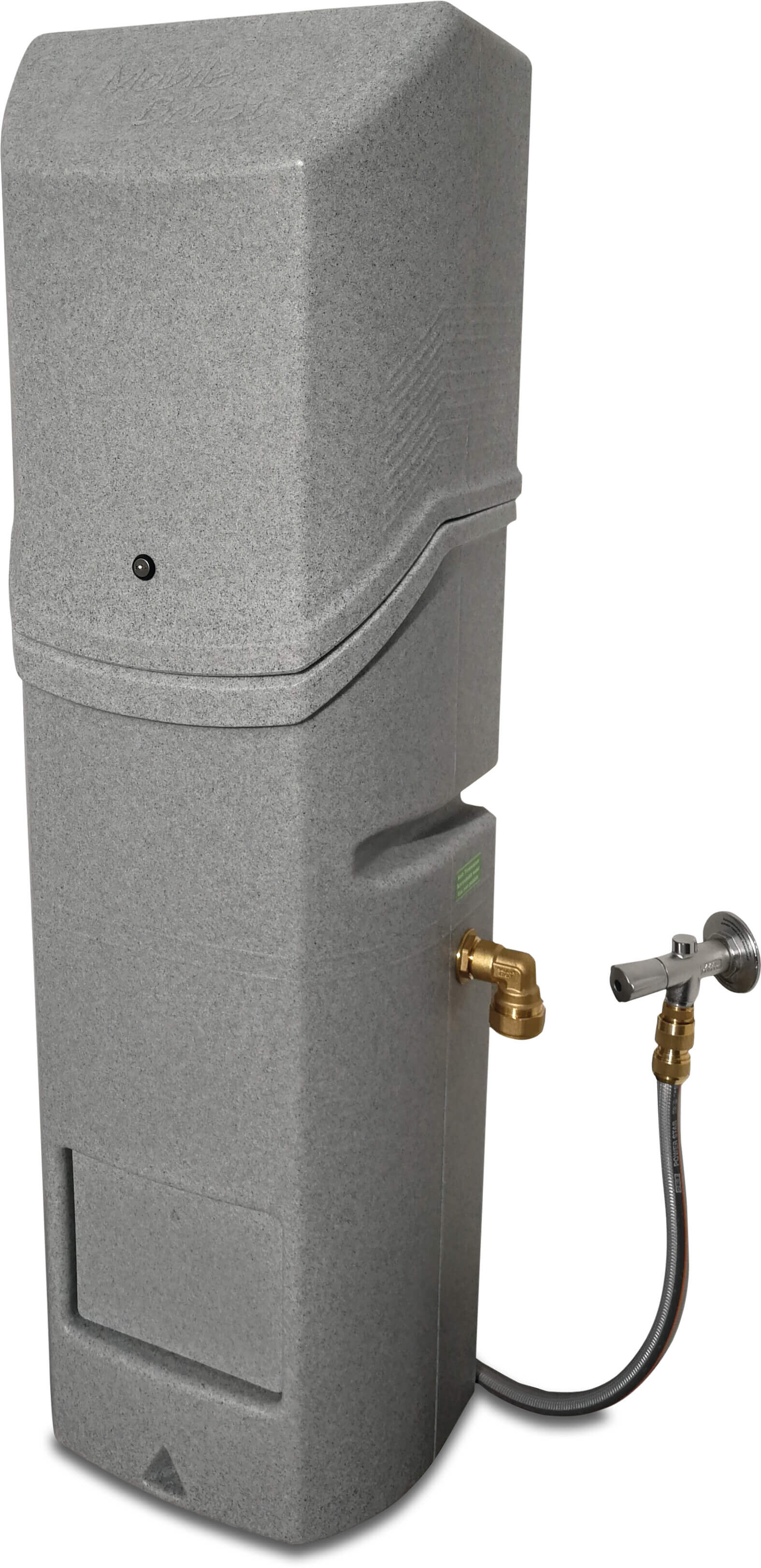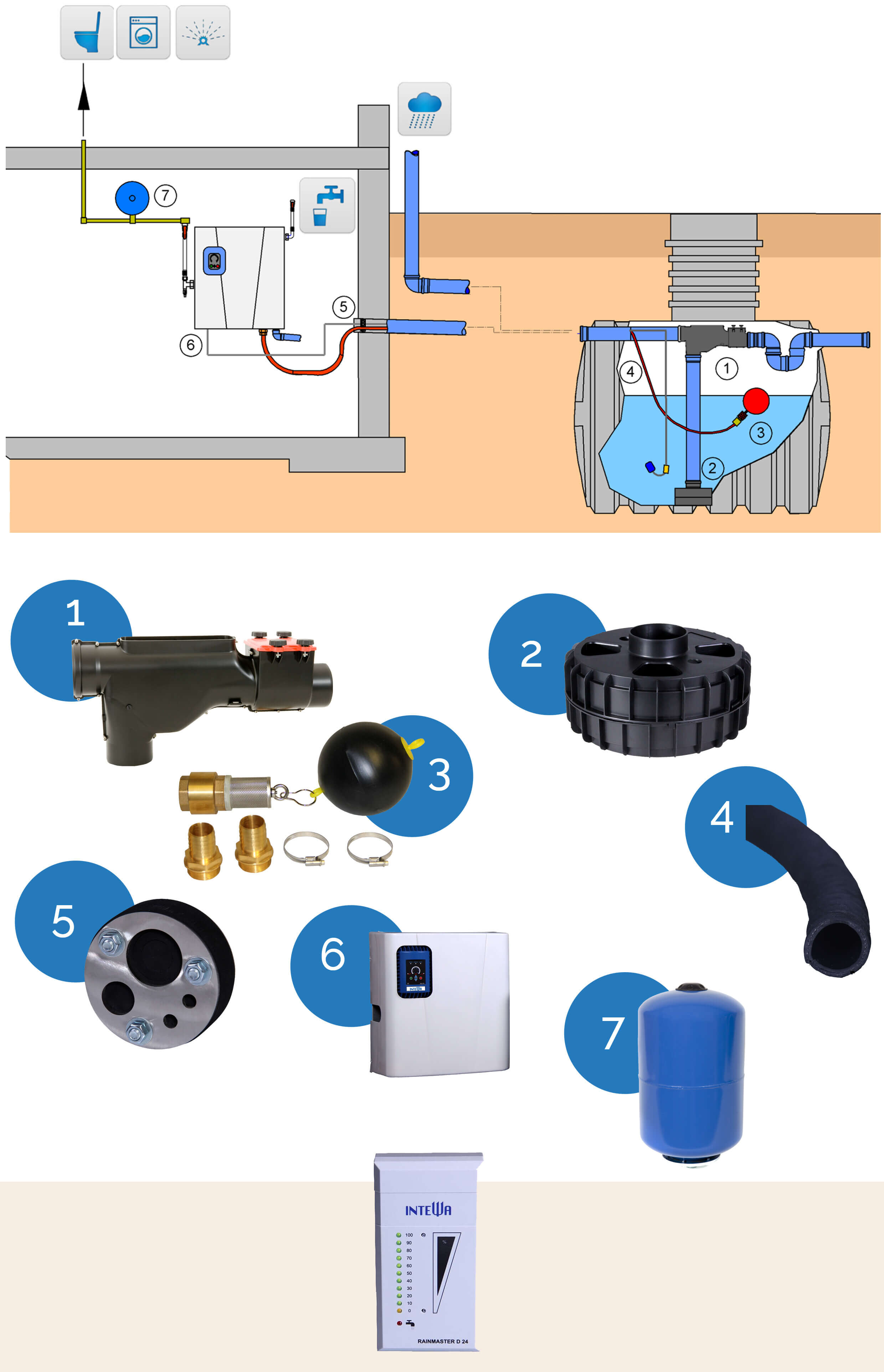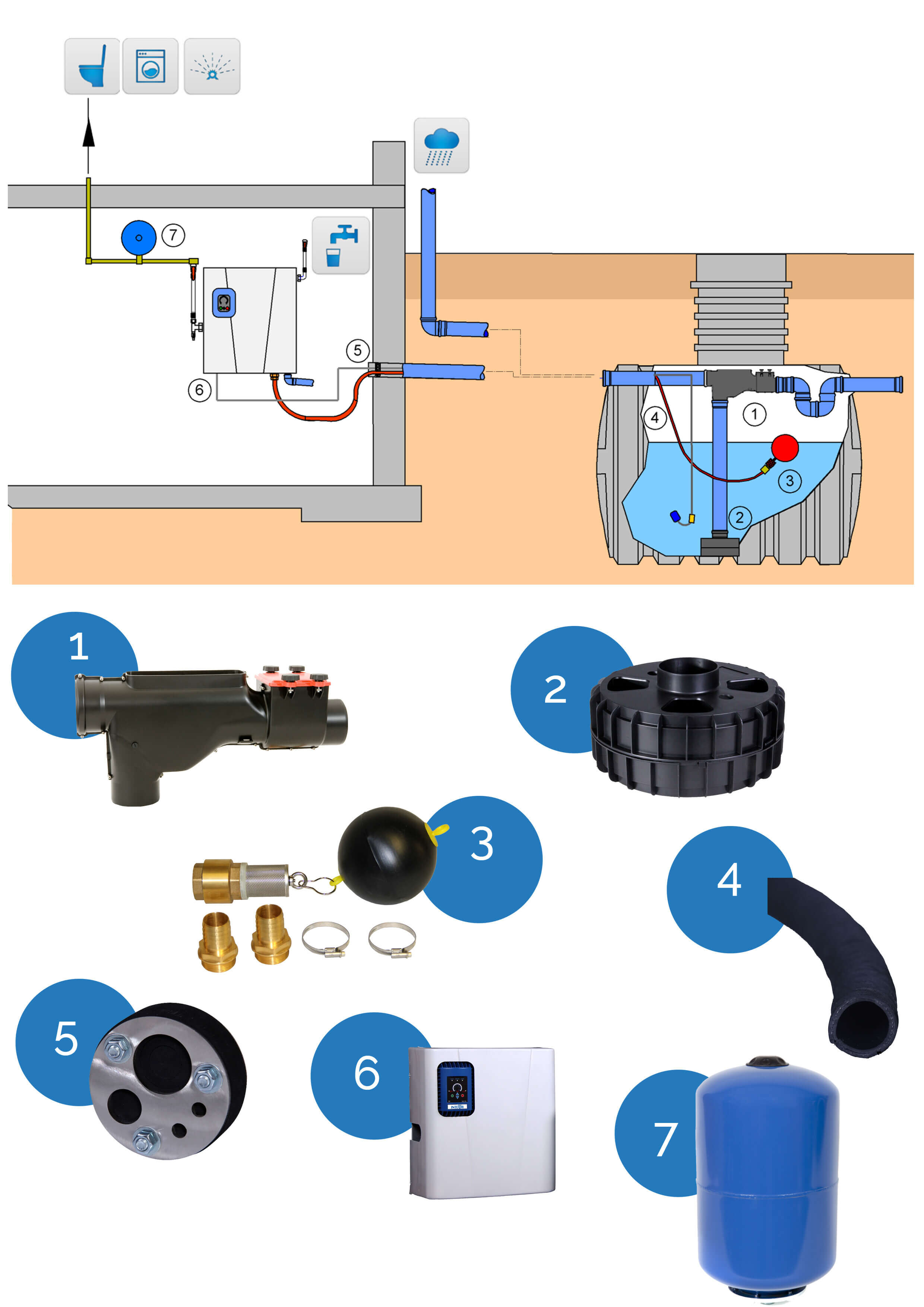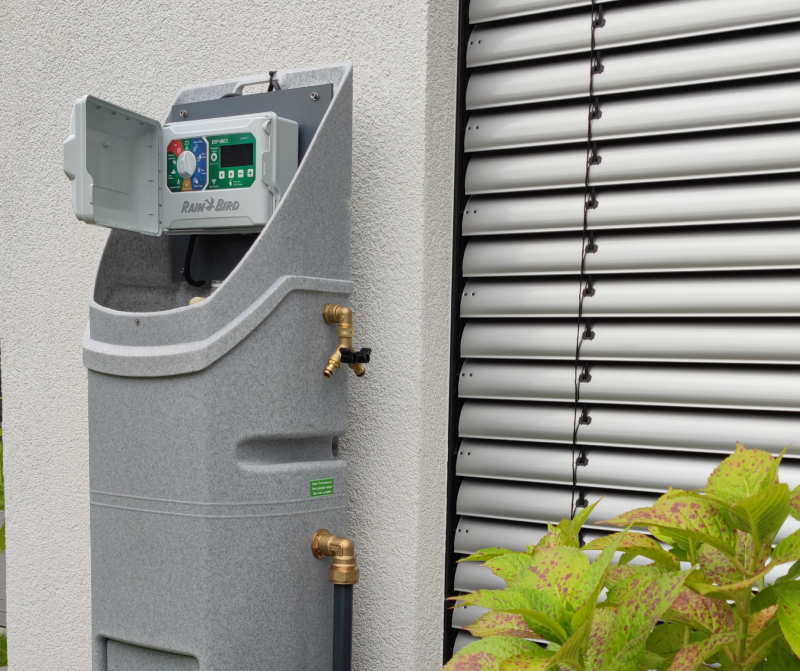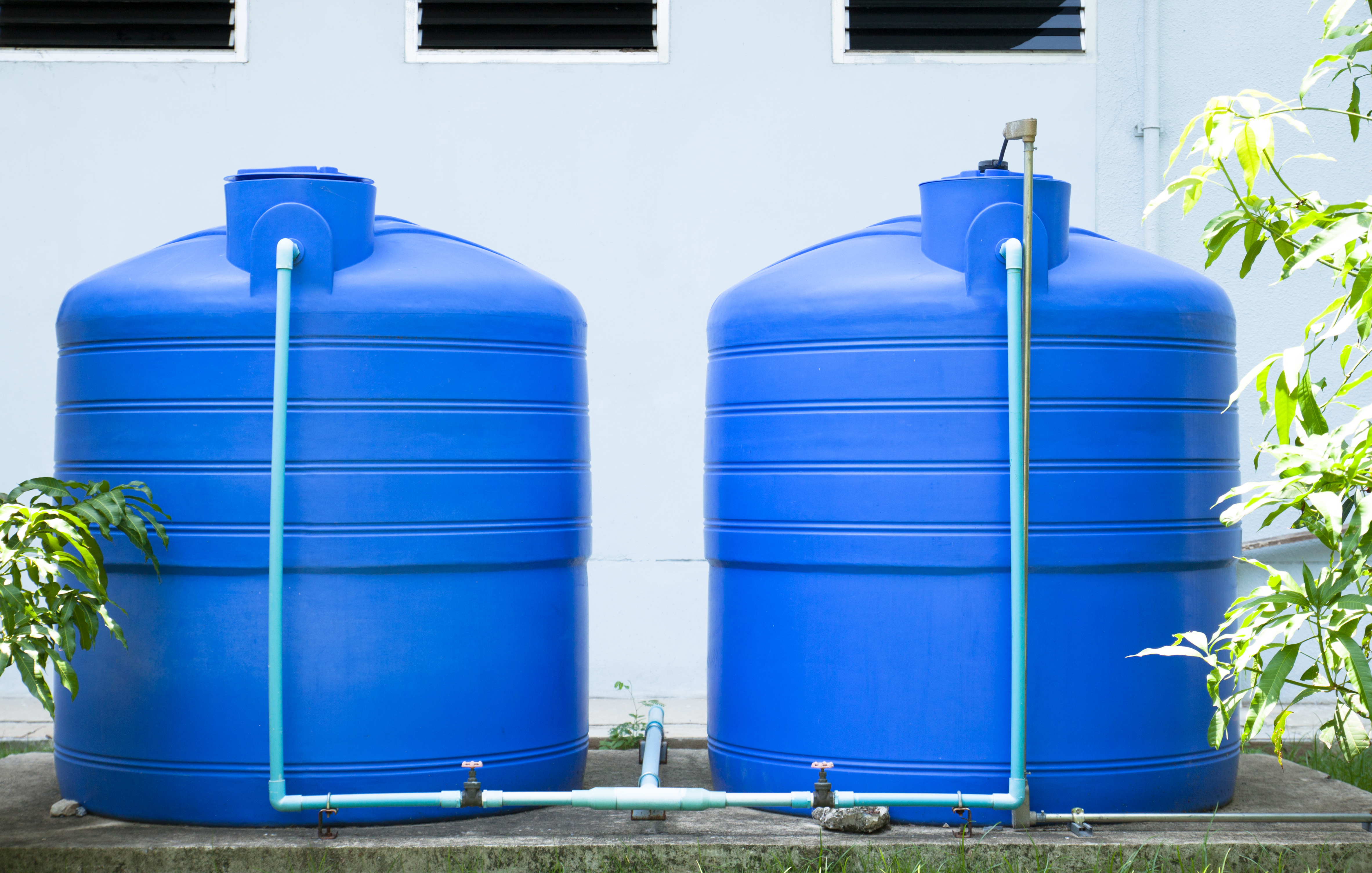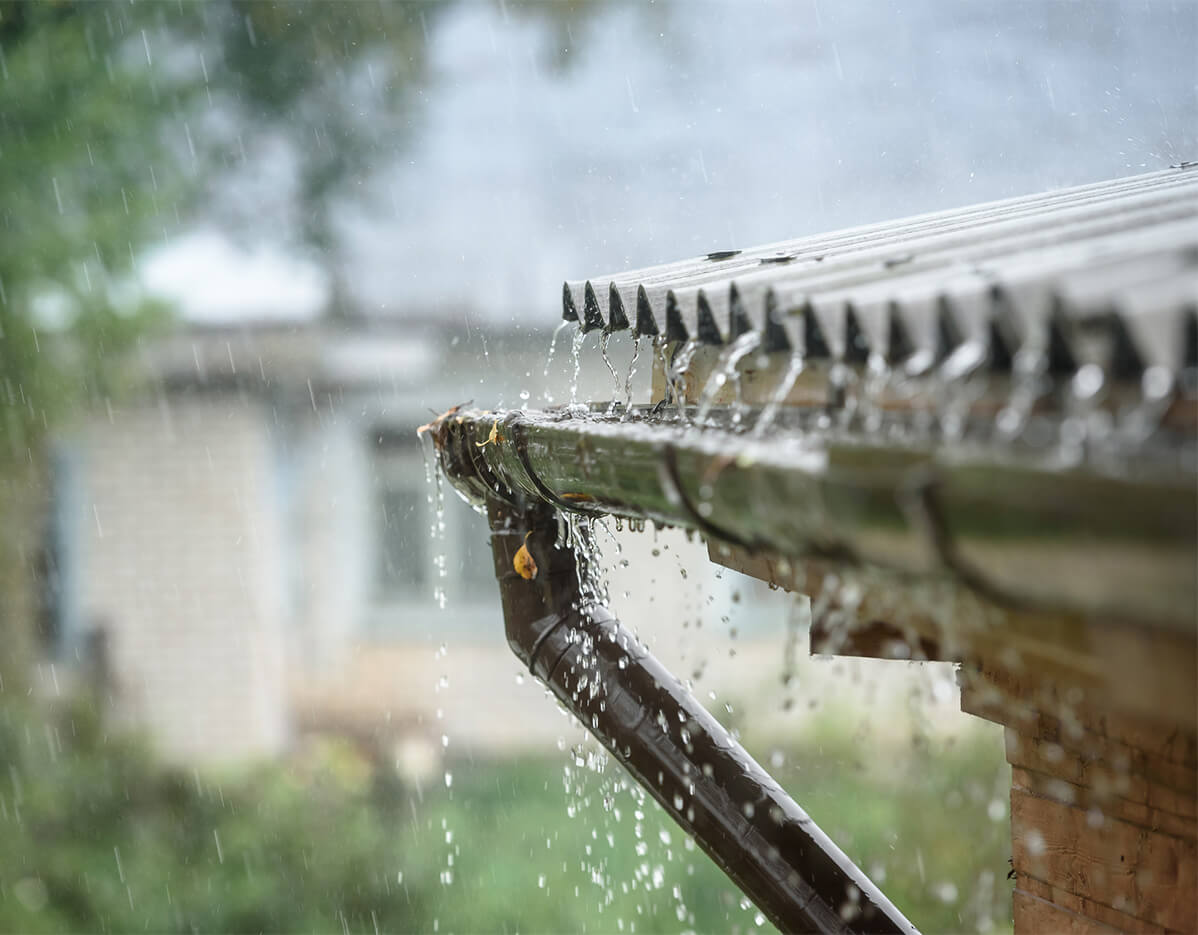Sustainable rainwater harvesting - filtration, pumping and storage
A heavy reliance on a mains feed water supply, in both commercial and domestic settings, is no longer an environmentally sustainable option. Rainwater has always been used as a clean water source in agriculture, and now we can see the benefits of investing in rainwater harvesting as a cost-effective solution that also helps to reduce our environmental impact in all commercial settings and in the home. Depending on the surface area of your roof, installing a rainwater harvesting system can give you a return on investment within 2-5 years.
We will work together with you to provide:
- The most sustainable solution
- Free water supply, covering many applications
- A system that's easy to use and maintain
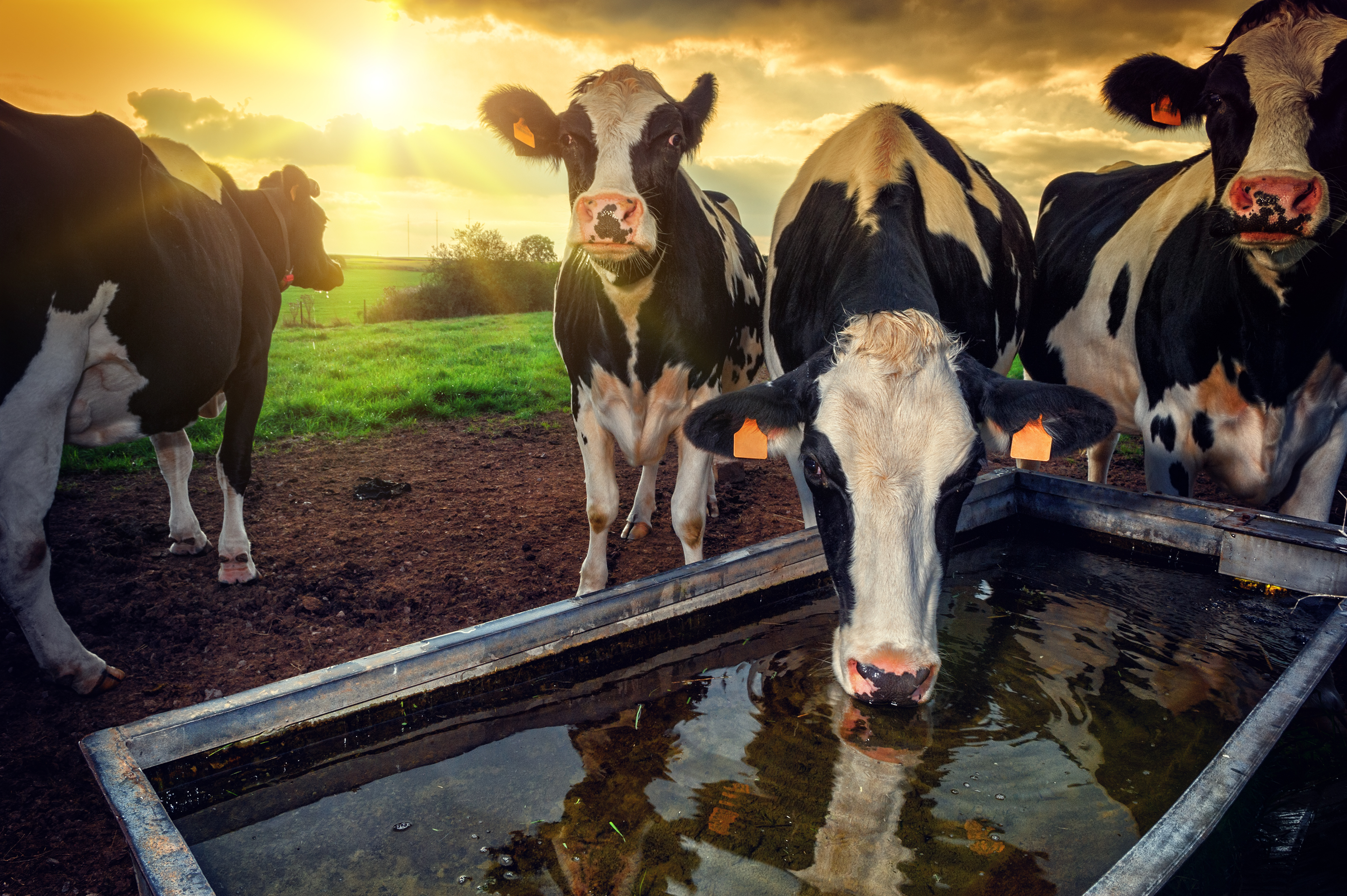
Commercial rainwater harvesting for livestock
The livestock industry consumes huge volumes of water, predominantly in cleaning and drinking. More than 100 litres can be used per animal per day equating to significant water bills and environmental costs.
Rainwater harvesting enables producers to collect ‘free’ water for cleaning and feeding. With new and improved technologies in filtration, pumping and storage, systems are easy to use and maintain.
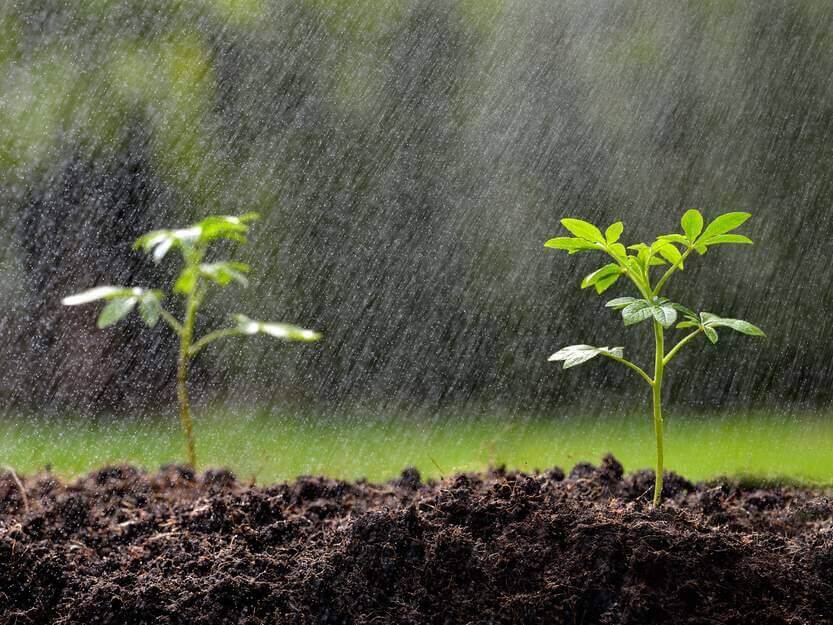
Commercial rainwater harvesting for agricultural applications
Irrigation is the most obvious response to drought and to improve crop production, yet it can be costly and unsustainable when blue water is used. Rainwater harvesting systems, however, are low-cost alternatives which can contribute to a climate resilient system.
A rainwater harvesting system provides significant energy savings as well as reductions in blue water usage and CO2 emissions. It is the sustainable and cost-efficient solution to meet your crop irrigation requirements.
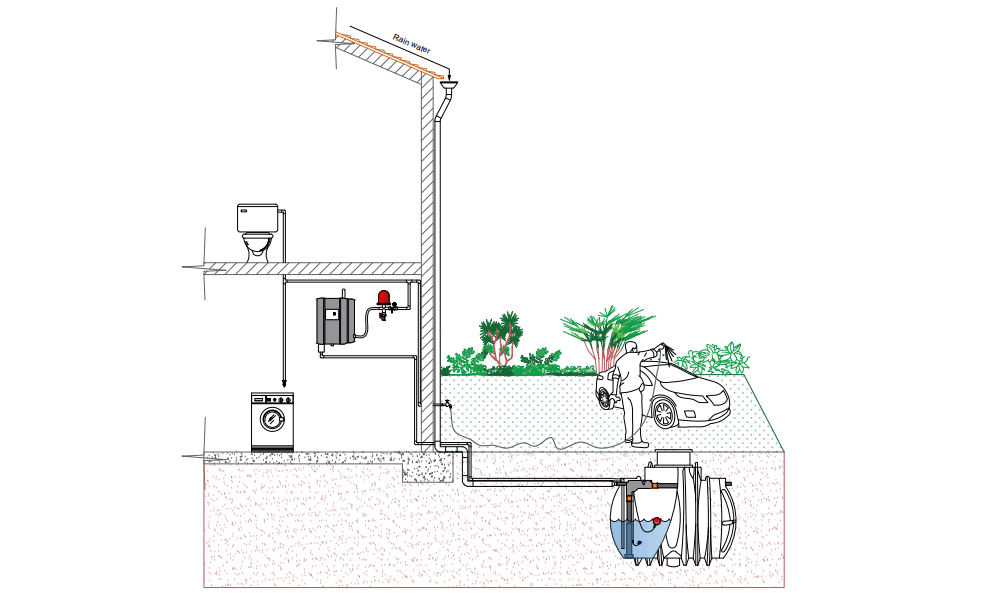
Domestic rainwater harvesting for garden irrigation and home cleaning
Across the globe, roughly 70% of the freshwater is used for irrigation purposes. This consumption is going up every year due to the increasing demand. An efficiently designed complete rainwater harvesting system for garden irrigation usage will be a good solution to tackle this demand efficiently in terms of cost as well as sustainability.
A well-designed rainwater harvesting system can efficiently collect, filter and store rainwater for domestic use. This will be a cost-effective source of non-potable water for garden irrigation, toilet flushing and laundry washing.
Popular products in rainwater harvesting
Break tanks and pumps
We offer the best break tanks mounted with pumps that are manufactured by the industry leaders such as DAB and Intewa. When the rainwater in the storage tank runs out, the 3-way valve fitted in the system switches to the main supply and maintains the right level of water in the break tank. The safety opening provided in the break tank secures the separation of mains water and rainwater. Break tanks that can be used as a booster set are also available in our assortment.
Choose from a distinct range of capacities starting from 10 litres to 1000 litres. Several options are available in terms of their type, the pump used, and the pressure rate.
Storage tanks
Whether it be a small storage tank or a massive 18000 litres tank, we got you covered. You can choose from a vast array of superior quality plastic storage tanks manufactured by Elbi. These tanks are a perfect solution for storing large volumes of water for a longer period of time. Tanks suitable for both underground and above ground installation are available.
Check out our FAQ section for information on how to calculate the size of storage tank needed for your installation.
Pipe, gutters and fittings
Choosing the right type of gutters, pipes and accessories for the rainwater harvesting system is crucial to obtain the desired efficacy of the system. We have brought together a comprehensive range of durable gutters, pipes, and other fittings to build a sturdy rainwater harvesting system.
They are available in several variants in terms of size, type, connection and material.
Frequently asked questions
What types of roofing can be used for rainwater collection?
Many roofing materials are suitable for collecting rainwater, especially when water is used for garden irrigation, toilet flushing, washing machine, and cleaning process (not drink). Be sure to avoid any substances that may cause poisoning in the water, such as lead or fungicides in wood shingles. If your roof is non-toxic, you can safely use water to irrigate without treatment. A study comparing the quality of rainwater that flows over common types of roofing materials found that all types may need water to be treated in order to meet drinking water standards.
What water tank sizes are available for the storage of rainwater?
The tank sizes for rainwater storage are available in a wide range up to a maximum size of 13000 litres for domestic systems. We offer much larger steel storage tanks for commercial systems. Tanks suitable for both above ground and underground installations are available in our assortment.
How much rain can I collect from my roof?
To find the rainwater yield, the following calculation can be used.
Rainwater yield = roof area x amount of precipitation x run-off coefficient x filter efficiency
Roof area: The total roof area in m².
Amount of precipitation: The average annual amount of precipitation in mm/year can be found online as well as from the respective weather office.
Run-off coefficient: The run-off coefficient determines the amount of precipitation in the total precipitation that runs off the roof.
The run-off coefficients of various roof coverings according to DIN 1989 Part 1 are:
Pitched hard roof- 0.8
Flat roof/not gravelled- 0.6 / 0.8
Green roof intensive/extensive- 0.3 / 0.5
Filter efficiency: Let’s take 0.98 as a standard value
What is the size of the tank needed for my rainwater harvesting system?
To find the right storage tank size, it is necessary to get an idea about the rainwater yield per year and the water demand.
Storage tank size can be selected using the following criteria:
If the yield < requirement, then a storage volume of 3% of the average annual rainwater yield
If the yield = requirement, then a storage volume of 5% of the average annual rainwater yield
If the yield > requirement, then a storage volume of 5% of the average annual rainwater yield
View our FAQs to find out more about how to calculate the storage tank size required for your project.
Can I install a gravity-fed drip irrigation system?
If your yard is flat or sloping, depending on your storage tank, you can install a drip irrigation system. The system will be similar to a standard drip irrigation system but requires the use of low or zero-gravity emitters. Standard emitters will not work properly under low pressure.
How do I pressurise the rainwater for household use?
We provide all parts for a rainwater harvesting system including the piping, gutters, rainwater storage tanks, break tanks and pumps to pressurise the water for the supply to the building. The pump starts soon after you turn on a tap and switches off after all taps are closed. This is all automatic.
Frequently asked questions
Many roofing materials are suitable for collecting rainwater, especially when water is used for garden irrigation, toilet flushing, washing machine, and cleaning process (not drink). Be sure to avoid any substances that may cause poisoning in the water, such as lead or fungicides in wood shingles. If your roof is non-toxic, you can safely use water to irrigate without treatment. A study comparing the quality of rainwater that flows over common types of roofing materials found that all types may need water to be treated in order to meet drinking water standards.
The tank sizes for rainwater storage are available in a wide range up to a maximum size of 13000 litres for domestic systems. We offer much larger steel storage tanks for commercial systems. Tanks suitable for both above ground and underground installations are available in our assortment.
To find the rainwater yield, the following calculation can be used.
Rainwater yield = roof area x amount of precipitation x run-off coefficient x filter efficiency
Roof area: The total roof area in m².
Amount of precipitation: The average annual amount of precipitation in mm/year can be found online as well as from the respective weather office.
Run-off coefficient: The run-off coefficient determines the amount of precipitation in the total precipitation that runs off the roof.
The run-off coefficients of various roof coverings according to DIN 1989 Part 1 are:
Pitched hard roof- 0.8
Flat roof/not gravelled- 0.6 / 0.8
Green roof intensive/extensive- 0.3 / 0.5
Filter efficiency: Let’s take 0.98 as a standard value
To find the right storage tank size, it is necessary to get an idea about the rainwater yield per year and the water demand.
Storage tank size can be selected using the following criteria:
If the yield < requirement, then a storage volume of 3% of the average annual rainwater yield
If the yield = requirement, then a storage volume of 5% of the average annual rainwater yield
If the yield > requirement, then a storage volume of 5% of the average annual rainwater yield
View our FAQs to find out more about how to calculate the storage tank size required for your project.
If your yard is flat or sloping, depending on your storage tank, you can install a drip irrigation system. The system will be similar to a standard drip irrigation system but requires the use of low or zero-gravity emitters. Standard emitters will not work properly under low pressure.
We provide all parts for a rainwater harvesting system including the piping, gutters, rainwater storage tanks, break tanks and pumps to pressurise the water for the supply to the building. The pump starts soon after you turn on a tap and switches off after all taps are closed. This is all automatic.


